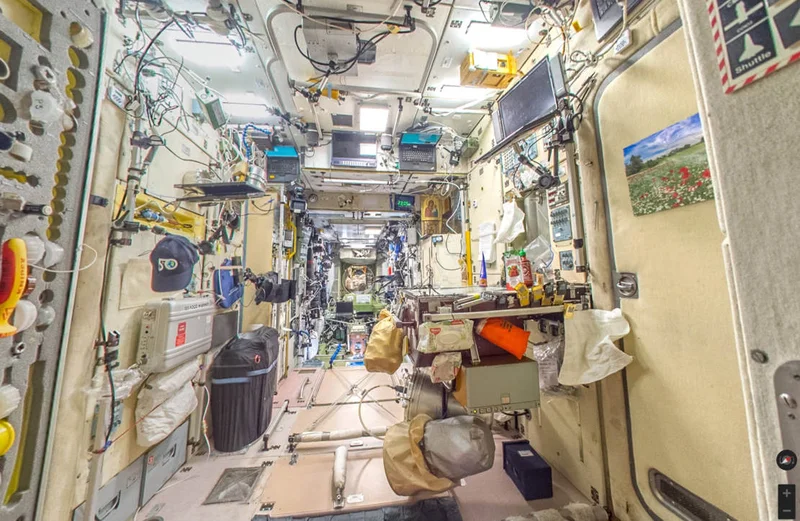This week, if you’re in Central Texas and the skies are clear, you’ll have two chances to see it. On Tuesday night, for a brief three minutes, a brilliant point of light will arc across the southwestern sky. On Wednesday, for a full six minutes, it will pass directly overhead. From the ground, the International Space Station looks serene, a silent testament to human ingenuity moving at 17,500 miles per hour. It’s a magnificent sight.
It is also a magnificent illusion.
The official narrative, the one curated and disseminated by NASA, frames the ISS as a vital stepping stone, a springboard to the Moon and Mars. We are told of the 25 years of continuous human presence, a streak of occupation unmatched in the history of spaceflight. The statistics are impressive: over 4,000 experiments conducted, more than 4,400 research publications generated, and breakthroughs ranging from growing chile peppers in orbit to 3D printing with metal. The station, we are told, is where humanity is mastering the challenges of deep space—perfecting life support, studying the effects of microgravity on the human body, and developing the technologies for self-sufficiency far from Earth.
This is a clean, compelling story. It’s also incomplete. My analysis of the operational and strategic data suggests a different narrative. The ISS is less a springboard to the future and more a monumental piece of aging infrastructure whose primary function is rapidly shifting from scientific research to economic transition. We are not watching the beginning of a new chapter in exploration; we are witnessing the carefully managed end of an old one.
An Audit of a Legacy Asset
The most critical data point regarding the International Space Station is not its orbital speed or the number of experiments it has hosted. It is a date: 2030. That is the year the station is scheduled to be deorbited, deliberately driven into a remote stretch of the Pacific Ocean. Every discussion about the station’s purpose and value must be filtered through the lens of this non-negotiable deadline.

For an asset with a fixed end-of-life, its operational realities become paramount. Recent events provide a granular look at the state of the hardware. In September, a scheduled orbital reboost using a docked SpaceX Dragon freighter was manually aborted less than four minutes into the burn due to a fuel tank swapping malfunction. While the maneuver was successfully completed later, the incident highlights the platform’s increasing reliance on external partners for basic station-keeping.
This dependency is more than just technical; it’s deeply geopolitical. The ISS is not a single entity but an inextricably linked collection of modules. Despite talk of isolating the Russian segment due to recurring air leaks and general aging, the station’s main computers—the core of its guidance and attitude control systems—are located in the Russian Zvezda module. Separating the segments would be a monumental undertaking, and it's debatable if such an exercise would be worth the effort for a facility with only a few years left on the clock. I've looked at hundreds of complex logistical systems, and this degree of reliance on a single, politically volatile point of failure for mission-critical functionality is an outlier. It’s a profound operational risk that is seldom mentioned in the glossy brochures.
The narrative of groundbreaking science also warrants a closer look. While thousands of experiments have been performed, the question a dispassionate analyst must ask is about the return on investment. The station is a platform for discovery, but its greatest output may not be a specific cancer-fighting drug or a new alloy. The data suggests its most significant contribution is the forced creation of a commercial market in low-Earth orbit.
NASA has been explicit about this pivot. The agency has already invested over $400 million to stimulate the development of privately owned, commercially operated space stations. The goal is to have these new platforms operational before the ISS is decommissioned, allowing NASA to transition from being an owner-operator to simply being a customer. This is the real story. The agency is attempting to orchestrate a handover, ensuring the 25-year streak of American presence in orbit—to be more exact, the streak running since November 2, 2000—does not end with a splash in the Pacific.
This plan, however, is a high-stakes bet. The success of these commercial ventures is far from guaranteed. Meanwhile, China’s Tiangong space station is already operational, a state-run facility that has been continuously crewed for approximately four years. If the American commercial replacements are delayed, the title of the longest continually inhabited outpost in space will quietly transfer to Beijing.
So when you step outside this week and track that silent, graceful arc across the sky, understand what you are really seeing. You are not just looking at a laboratory or an outpost. You are watching a countdown timer. You are witnessing the final, carefully managed years of a multi-hundred-billion-dollar public works project (the precise cost is notoriously difficult to calculate) as it attempts to seed a private market to take its place. The silent passage of `the international space station from earth` is the ticking of that clock.
The ultimate legacy of the International Space Station will not be found in its 4,400 research papers. It will be recorded in the financial statements of the commercial companies that succeed or fail in replacing it. The station’s greatest experiment has nothing to do with microgravity; it is a monumental test of whether a government-led monopoly in low-Earth orbit can be successfully privatized before its founding asset is deliberately destroyed. The 2030 deorbit is not an end—it is the final, unmovable deadline for private industry to prove the model works. The data on that outcome has not yet been written.
Reference article source: